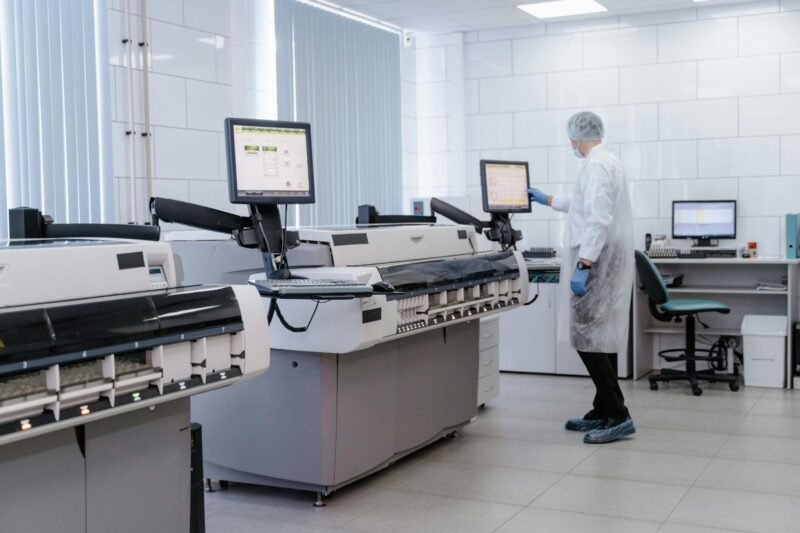
In today’s fast-paced tech landscape, understanding the software development process is crucial for businesses aiming to stay competitive. The bixiros.5a8 development process stands out as a systematic approach that streamlines project management and enhances collaboration among teams. This method not only boosts efficiency but also ensures high-quality outcomes that align with user needs.
As organizations increasingly rely on software solutions, grasping the intricacies of bixiros.5a8 becomes essential. It offers a framework that helps teams navigate the complexities of development, from initial planning to deployment. By embracing this process, companies can minimize risks and maximize their chances of delivering successful software products that resonate with their target audience.
why Is Software Bixiros.5a8 Development Process
Software bixiros.5a8 represents a structured approach to software development. This framework emphasizes iterative processes and continuous feedback, enhancing adaptability in dynamic environments.
Businesses employing bixiros.5a8 benefit from several key elements:
- Iterative Development: Projects occur in cycles, allowing teams to refine features based on stakeholder feedback.
- Collaboration: Bixiros.5a8 fosters teamwork among developers, testers, and clients, promoting shared goals and clear communication.
- Quality Assurance: Regular testing and validation ensure high standards throughout the development life cycle.
Bixiros.5a8 is particularly valuable in minimizing risks. Teams can address issues quickly, preventing major setbacks. Regular iterations provide opportunities to pivot strategies based on market changes or user preferences, ensuring the final product meets customer expectations.
To implement bixiros.5a8 effectively, organizations should focus on these strategies:
- Define Clear Goals: Establish what success looks like from the outset, aligning the team around specific objectives.
- Encourage Feedback: Develop a culture of open communication to facilitate constructive criticism.
- Invest in Tools: Utilize software management tools that streamline communication and project tracking.
Understanding the bixiros.5a8 framework equips businesses to navigate the complexities of software development while enhancing their ability to deliver quality products efficiently.
Importance of the Development Process

Understanding the development process significantly contributes to project success. The bixiros.5a8 framework’s structured approach enhances project management and fosters collaboration among all team members.
Quality Assurance
Quality assurance plays a critical role in the bixiros.5a8 method. Regular testing and validation ensure software meets defined standards and specifications. This continuous feedback mechanism allows teams to identify and resolve issues swiftly, which minimizes bugs in the final product. By implementing a rigorous testing schedule, organizations can maintain high quality throughout the development cycle, resulting in reliable and robust software solutions.
User Experience
User experience (UX) is a cornerstone of the bixiros.5a8 framework. This method prioritizes end-user feedback at various development stages, ensuring that the final product aligns with user needs and expectations. Engaging users through prototypes and iterative design reviews enhances usability and satisfaction. Focusing on UX leads to software solutions that not only meet functional requirements but also provide a seamless experience, increasing user retention and engagement.
Key Stages of Bixiros.5a8 Development
The bixiros.5a8 development process consists of several key stages that structure the entire software development lifecycle. Each stage emphasizes collaboration and iterative feedback, enhancing efficiency and quality in delivering software solutions.
Planning and Requirements
Planning establishes the foundation for the bixiros.5a8 process. Teams collect and analyze requirements from stakeholders to understand their needs clearly. This stage involves defining project goals, scope, and deliverables. Prioritizing requirements ensures alignment with user expectations and business objectives. Documented requirements serve as a reference throughout development, facilitating effective communication among team members.
Design and Prototyping
Design and prototyping transform requirements into tangible concepts. Teams create wireframes and mockups to visualize the software’s interface and functionality. Prototyping allows for early user feedback, enabling teams to refine designs based on client input. Iterative design revisions ensure the final product meets aesthetic and usability standards, enhancing user experience. This stage emphasizes collaboration among designers, developers, and stakeholders, fostering a shared vision of the product.
Implementation and Coding
Implementation involves actual coding to bring designs to life. Developers collaborate closely with designers to ensure accurate feature integration according to specifications. Coding follows best practices and coding standards to promote maintainability. Regular code reviews during this stage help identify issues early, ensuring consistency and quality. Teams utilize version control systems to manage changes, facilitating coordination and collaboration among developers.
Testing and Deployment
Testing and deployment verify the software’s functionality and performance. Teams conduct various tests, including unit, integration, and user acceptance testing, to identify bugs and ensure quality. Continuous feedback during testing allows for rapid iterations and fixes, minimizing risks before deployment. Once the product meets all standards, deployment follows a structured approach, releasing the software to users. Post-deployment, teams gather feedback for future improvements, closing the feedback loop fundamental to the bixiros.5a8 methodology.
Challenges in the Bixiros.5a8 Development Process
Several challenges arise during the bixiros.5a8 development process, impacting efficiency and project outcomes. Understanding these obstacles is crucial for organizations seeking to optimize their approach and enhance software quality.
Technical Issues
Technical issues often arise during the bixiros.5a8 development process, affecting software performance and functionality. Common problems include:
- Integration Challenges: Integrating various system components or third-party services can lead to compatibility issues, increasing development time.
- Performance Bottlenecks: Identifying and resolving performance bottlenecks becomes essential; slow software can hinder user satisfaction and engagement.
- Security Vulnerabilities: Addressing security risks is critical; gaps in security can expose users and organizations to threats, necessitating ongoing audits and updates.
- Infrastructure Limitations: Organizations may face constraints with existing infrastructure, impacting the ability to scale or deploy new features effectively.
Addressing these technical issues through proactive testing and development strategies is vital for effective implementation of the bixiros.5a8 framework.
Communication Barriers
Communication barriers significantly hinder collaboration within the bixiros.5a8 development process. Key factors include:
- Misaligned Expectations: Differences in understanding project goals among stakeholders can lead to conflicts and delays, emphasizing the need for clarity.
- Language Limitations: Language differences between team members may cause misunderstandings, impacting the effective exchange of ideas.
- Insufficient Feedback Loops: Lack of structured feedback mechanisms can result in missed opportunities for improvement, hindering the iterative process vital to the framework.
- Remote Work Challenges: With many teams working remotely, fostering connections often proves difficult, making it essential to implement reliable communication tools.
Addressing these communication barriers through regular updates, structured meetings, and effective tools enhances collaboration and project success within the bixiros.5a8 framework.
Mastering the bixiros.5a8 development process is crucial for organizations aiming to thrive in the competitive tech landscape. By embracing this structured approach, businesses can enhance project management and team collaboration while delivering high-quality software solutions that resonate with users.
The iterative nature of the bixiros.5a8 method allows teams to adapt swiftly to changes, minimizing risks and ensuring that user feedback is integral to the development process. As software becomes increasingly central to business operations, leveraging this framework not only streamlines development but also fosters innovation and user satisfaction.
Investing in the right tools and fostering a culture of open communication will empower teams to navigate challenges effectively and achieve their goals. Ultimately, the bixiros.5a8 method stands as a vital strategy for any organization committed to delivering exceptional software products.












